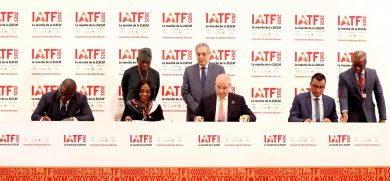Poverty levels still high—World Bank
The World Bank says the number of Malawians living below the international poverty line of $2.15 (about K2 227.40) per day is projected to remain at 71 percent this year and in 2023 due to the country’s lack of sustained economic growth.
In its Malawi Poverty Outlook published on Friday, the Bretton Woods institution said Malawi’s slow economic growth along with the continuous inflationary pressures and recurrent weather shocks will make it more difficult to reduce poverty.

The report indicates that the economy is projected to show subdued growth in 2022 at 1.5 percent due to weakened agricultural performance, electricity supply disruptions and high global commodity prices emanating from the impacts of the Russia-Ukraine war.
Reads the report in part: “Though economic activity picked up slightly, contributing to a mild recovery in the industry and services sectors, the lack of GDP [gross domestic product] per capita growth kept the share of people living with less than $2.15 per day at 70.6 percent in 2021.”
Speaking in an interview on Monday, Catholic University of Malawi head of economics Hopkins Kawaye said Malawi needs to deal with corruption, inefficient policies, heavy borrowing for consumption and inefficiencies on production to move out of poverty.
He said: “We need industries to produce to boost economic activity, but for industries to produce so that the country can attain meaningful growth which is critical in reducing poverty, we need such things as foreign exchange, transport, among others, but all these are unavailable at the moment.”
In his paper titled ‘The quest for a pragmatic economic management framework in Malawi, University of Malawi’s associate professor of economics Ronald Mangani argued that Malawi’s poverty is by design.
He blamed the country’s underdevelopment on factors, including lack of economic independence and neoliberalism, which he said lean towards weakening the weak while strengthening the strong.
Figures show Malawi’s GDP per capita income is at $627 (K649 572) well below neighbouring Zambia, Zimbabwe and Tanzania at $1120.6 (about K1 million), $1737.2 (K1.7 million) and $1 135.5 (K1.1 million) in that order.
The World Bank analysis on Malawi poverty comes at a time the country’s new long-term development plan, Malawi 2063, has also acknowledged that poverty has remained persistently high over the years.





